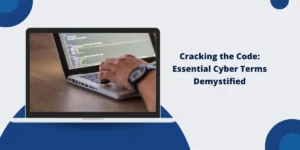Online privacy has never been more precarious. Data breaches, sophisticated phishing campaigns, and identity theft dominate cybersecurity headlines, but one significant threat often flies under the radar: the vulnerability created by expired domain names.
Every day, thousands of domains expire due to forgotten renewals, business closures, or simple neglect. These expired domains don’t simply vanish—they enter a secondary market where anyone, including cybercriminals, can acquire them along with all their historical data, backlinks, and residual trust. For privacy-conscious individuals and organizations, understanding this threat is crucial.
When a domain expires, it carries with it a digital footprint that can be weaponized against former users, customers, and partners, making expired domain management an essential component of comprehensive online privacy protection.
What Happens When Domains Expire
Understanding the Expiration Process
Domain expiration is a natural part of the domain lifecycle, designed to ensure that unused domains eventually return to the market. When your registration period ends, the domain doesn’t become available to others immediately. Instead, it goes through several distinct phases that determine whether you can recover it—and at what cost.
Renewal Grace Period
After a domain expires, it enters a renewal grace period that typically lasts 30 days, though the grace period varies by TLD. During this window, your website and email services stop working, but you can still recover the domain easily.
Domains in the renewal grace period can be renewed at the regular renewal prices, which are determined by the price of the TLD at that time. This is your best opportunity to reclaim the domain without extra fees. However, the domain may be placed on a domain aftermarket during this period, where other users can place backorders on these soon-to-fully-expire domains.
Redemption Period
If you miss the grace period, things get complicated. Once the renewal grace period ends, the domain enters the redemption period for another 30 days. During this phase, the domain leaves the registrar’s control and returns to the central registry, requiring registrars to submit a request directly to the registry to retrieve it.
Recovery is still possible, but this process requires an additional cost, which varies based on the domain extension. The process also takes additional time to complete. Even more concerning, some domains can be sold in expired auctions during the redemption period, and if this is the case, there will be no opportunity for the original owner to redeem the domain.
Full Expiration and Public Release
After redemption ends without action, the domain reaches its final stage. Approximately 5 days after the domain redemption period, any domain name search can be used to find the domain and purchase it for the standard registration cost. At this point, anyone can register it.
If the domain had a single backorder, the rereleased domain will go directly into that registrant’s account. If there were multiple backorders, it would enter a backorder auction. This means cybercriminals monitoring valuable expired domains can immediately claim them the moment they become available.
What Attackers Inherit
When someone registers your expired domain, they don’t just get the name—they inherit everything attached to it. Email infrastructure may still route messages to the domain. SSL/TLS certificates remain valid until they expire separately. DNS records persist in caches worldwide. Authentication systems still recognize the domain for password resets and account recovery.
Most dangerous is the inherited trust: search engine rankings, backlinks from reputable sites, and years of domain reputation stay intact. Customer databases, server backups, cached pages, and API endpoints may remain accessible. This combination of technical access and established credibility makes expired domains perfect weapons for cybercriminals.
Privacy Risks Linked to Expired Domains
Email Account Takeovers
One of the most severe privacy risks involves email hijacking. When a domain expires, any email addresses associated with it become vulnerable entry points for attackers. Criminal groups have set up mail servers using expired domains, which can be used to gain access to social media accounts associated with the expired domain, or more worryingly, web services and SaaS applications.
A malicious actor who reregisters the domain can configure mail servers and recreate email accounts that previously existed—addresses like john@company.com or support@business.org. With control over these addresses, attackers can initiate password resets on countless online services, from social media platforms to banking websites. They can intercept two-factor authentication codes, access corporate systems using domain-based authentication, and receive sensitive communications intended for former employees.
Data Leakage and Information Exposure
Even after a website goes offline, sensitive data frequently remains accessible through multiple vectors. Many expired domains previously hosted customer portals, internal systems, or cloud-based applications. Database backups often remain stored on servers long after a domain expires. Cached versions of pages containing personal information persist in search engines and web archives. API endpoints may continue functioning despite the main site being down, and form submissions might still be routed to the domain.
Cloud storage services linked to the domain can remain accessible, as can third-party integrations and webhooks that were configured when the site was active. When cybercriminals acquire these domains, they often discover databases, documents, and communication records that the previous owner assumed were safely deleted or inaccessible.
Brand Impersonation and Phishing Attacks
Phishing is the most common form of cybercrime, with an estimated 3.4 billion spam emails sent every day. Expired domains provide cybercriminals with an especially effective vector for these attacks because they inherit the legitimacy that would take years to build with a new domain.
Why Expired Domains Are Perfect for Attackers
Expired domains bypass security filters that automatically flag newly registered domains as suspicious. They appear in customers’ old emails and bookmarks, creating a false sense of familiarity and trust. These domains retain established domain authority and reputation with search engines and email providers. Email security systems trust them based on historical sending patterns, and users readily recognize the familiar domain name without questioning its authenticity.
Preventing Privacy Breaches from Expired Domains
Protecting against expired domain vulnerabilities requires proactive management and strategic planning. The most fundamental defense is implementing robust domain monitoring and renewal systems. Organizations should conduct quarterly domain audits, cataloging all domains owned, their expiration dates, and their current usage status. Setting domains to auto-renewal through your registrar provides a safety net, but shouldn’t be the only protection—financial or administrative issues can still cause renewals to fail. Establishing multiple layers of notification, including alerts to different team members and departments, ensures that impending expirations don’t slip through organizational cracks.
Beyond managing your own domains, consider acquiring defensive domain registrations. This strategy involves registering common misspellings of your primary domain, variations using different top-level domains (.net, .org, .co), and potentially valuable expired domains related to your brand or industry. Reputable marketplaces like Dynadot allow organizations to acquire expired domains through transparent auction processes, enabling companies to reclaim domains they previously owned or secure domains that could be used for impersonation. This defensive strategy is particularly important for businesses handling sensitive customer data or operating in sectors where trust is paramount.
For domains you no longer need, proper decommissioning is essential. Before allowing a domain to expire, migrate all email addresses to new domains and notify contacts of the change, audit and eliminate any authentication or verification systems tied to the domain, remove the domain from all internal documentation and systems, and consider whether the domain has enough residual value that you should maintain it indefinitely to prevent misuse. Some organizations choose to keep expired domains registered indefinitely, treating the annual registration fee as a small price for preventing privacy and security incidents.
Additionally, implement monitoring for your expired or expiring domains even after they leave your control. Services exist that track domain ownership changes and can alert you when a previously owned domain is reregistered. This early warning allows you to notify customers, invalidate old communications, and take legal action if necessary to recover domains that were allowed to expire through error or that are being used for brand impersonation.
Best Practices for Protecting Online Privacy
Integrate Domain Management with SSL/TLS Security
Comprehensive privacy protection requires coordinating domain and certificate management. Synchronize domain and certificate renewal schedules where possible. Implement certificate monitoring that alerts to upcoming expirations, unexpected certificate changes, and certificate authority changes. Use automated certificate renewal services like Let’s Encrypt for routine certificates, but maintain Extended Validation SSL certificates for critical customer-facing domains.
Domain Security Hardening
Enable DNSSEC to prevent DNS spoofing attacks. Implement robust registrar account security, including mandatory two-factor authentication, unique strong passwords, and restricted access to essential personnel only. Conduct regular access audits. Use domain privacy services to shield registrant information from public WHOIS databases. Enable registrar lock on all domains to prevent unauthorized transfers.
Adopt Minimal Digital Footprint Principles
Limit domains to those serving clear, current business purposes. Every domain represents a potential vulnerability. Regularly review your domain portfolio and retire unnecessary domains using proper decommissioning procedures. Document the business purpose for each maintained domain.
Deploy Proactive Privacy Monitoring
Use domain monitoring services that track your registered domains and newly registered domains similar to yours. Implement brand protection services that monitor for impersonation. Subscribe to threat intelligence feeds that include domain-based threats. Consider working with specialized cybersecurity firms for advanced monitoring if you operate in high-risk sectors.
Education and Awareness
Develop employee training programs, ensuring staff understand domain security. Communicate clearly with customers about which domains your organization legitimately uses. Establish verification protocols for partners and suppliers. Create clear channels for reporting suspicious domain-related activity.
Final Thoughts
The intersection of domain management and online privacy represents a critical but often overlooked aspect of cybersecurity. Expired domains are not merely technical assets that can safely lapse—they’re repositories of trust, data, and access that can become powerful weapons in the wrong hands.
From email account takeovers to brand impersonation, the privacy risks associated with expired domains demand serious attention from individuals and organizations alike. By implementing rigorous domain monitoring, maintaining defensive registrations, and integrating domain management into comprehensive privacy strategies, you can protect yourself and your stakeholders from these emerging threats.
Don’t wait for a privacy breach to take domain security seriously—audit your digital assets today, secure vulnerable domains, and ensure that your domain portfolio is a foundation for privacy rather than a liability waiting to be exploited.

Priya Mervana
 Verified Web Security Experts
Verified Web Security Experts
Priya Mervana is working at SSLInsights.com as a web security expert with over 10 years of experience writing about encryption, SSL certificates, and online privacy. She aims to make complex security topics easily understandable for everyday internet users.



